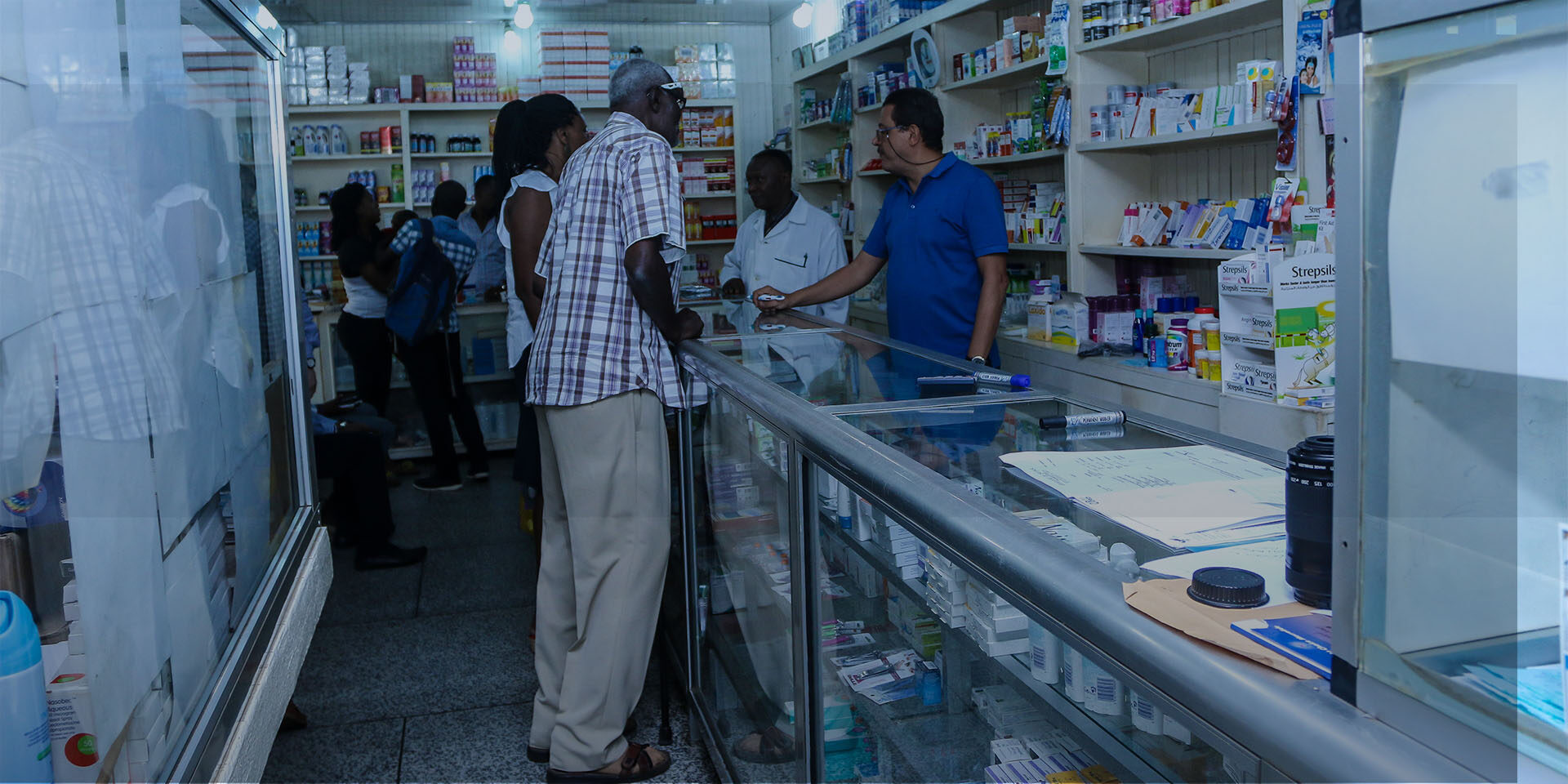
Leveraging Private Sector Approaches to Enable Patient-Centric Supply Chains
October 26, 2021 | 3 Minute ReadLeveraging private sector best practices and building public private partnerships are key to creating and sustaining patient-centered health supply chains.
Health commodity supply chains begin and end with patients. Patient-centered supply chains ensure that patients have timely access to quality, affordable medicines when and where they need them. To achieve this, patient-centered supply chains leverage information to understand patient behavior, make informed decisions about inventory needs, and ensure positive outcomes. Understanding disease trends, patient product consumption patterns, and patterns in health care service usage are necessary to effectively and efficiently implement supply chain processes. As the demand and scope of health supply chains grow, public facilities are often overextended, causing a strain on existing staff infrastructure. Further, overcrowded facilities and dual staff and medication shortages are major obstacles in the delivery of necessary health commodities and care to patients.
To reach more patients and bolster capacity to deliver health commodities and services, innovative approaches and partnerships are required. Engaging and partnering with private sector partners as well as leveraging private sector best practices can help improve functional and operational supply chain capabilities. While there are myriad opportunities to apply private sector approaches and build health supply chain partnerships improve their patient-centeredness, three promising areas stand out: data visibility, performance-based logistics, and differentiated delivery models.
Data Visibility
Data visibility is key for supply chain success and resiliency. Supply chain data visibility helps to prevent stockouts of medications, ensure on-time delivery, and enable proper inventory management, which helps improve forecasting for product availability while simultaneously keeping inventory levels low. The private sector prioritizes data visibility to inform and manage their supply chains, helping keep prices down for patients and ensuring that high-quality, safe commodities are delivered at a reasonable cost. Demand-driven, private sector supply chains enable strategic prioritization of products based on patient demand, maximizing resources through efficient labor and logistics planning. Awareness of regional differences in performance and demand prevents over-staffing and improves resource use, resulting in lower costs to patients. The USAID Global Health Supply Chain Program-Procurement and Supply Management (GHSC-PSM) project applies the private sector’s prioritization of data visibility and supply chain transparency through the development of the Quantification Analytics Tool (QAT), a modern, open-source, web-enabled forecasting and supply planning solution that enhances data access and system interoperability. Private sector approaches and software, such as Python, Power BI, Jura, and Amazon Web Services, were leveraged to create QAT. This tool enables a consistent user interface for countries and allows data integration from multiple sources. QAT ultimately brings greater visibility into commodities’ stock levels and deliveries, and improves stakeholder-partner connectivity in health supply chains.
Performance-Based Logistics
Performance-based logistics is another private-sector approach that can be leveraged to make supply chains patient-centered. Using and tracking appropriate key performance indicators (KPIs) are necessary to manage and improve supplier performance. However, in many low- and middle-income countries (LMICs), capturing and monitoring these KPIs is challenging due to limited capacity and poor information systems. Additionally, health supply chains that are still developing often rely on either reactive or symptomatic KPIs, such as commodity stockouts at facilities, to measure performance. Performance-based logistics approaches commonly used by the private sector, such as activity-based costing (ABC), allow for the determination of true costs of operations. In ABC, KPIs can be established to reveal root cause issues and opportunities for improvement. In 2016, Lesotho’s National Drug Service Organization (NDSO) was tasked with monthly last-mile delivery to approximately 220 health facilities, which raised concerns about additional costs. GHSC-PSM supported the country in better understanding overall operating expenses and cost differences in product handling, storage, and last-mile delivery requirements by applying the ABC model. Successful ABC implementation in Lesotho led to several positive results, including saving time, shifting to true activity-based management, improving efficiency, and curtailing costs. Gathering, measuring, reporting, and analyzing true costs generated led to reduced operational costs, freeing up resources to be spent on other areas to improve supply chain performance and ensure greater access for patients.
Differentiated delivery models
Recently, donors have increased focus on patient segmentation and differentiated care delivery approaches, aiming to meet patients where they are, rather than requiring them to go to facilities. Utilizing differentiated delivery models, such as decentralized drug distribution (DDD), increases convenience, helps reach population segments that rely on community-based and private clinics to access their medication, and relieves pressure on often overcrowded facilities. Private sector partnerships are crucial to implementing DDD, requiring increased engagement of alternative pick-up points, including private hospitals, automated dispensing units or electronic lockers, and private pharmacies. These private sector outlets offer patients increased privacy, greater convenience, more consistent stock availability, shorter wait times, and ultimately, improved patient-centered care. The USAID Nigeria Strategic HIV/AIDS and Tuberculosis (TB) Response Program (Nigeria SHARP) works to improve the quality of high-impact HIV and TB prevention and treatment services, and to strengthen local health systems to respond to these epidemics. In 2020, the SHARP program responded to movement restrictions and curfews due to COVID-19 by rapidly expanding service delivery and DDD by partnering with 55 community pharmacies across Nigeria for antiretrovirals (ARV) distribution. Partnering with community pharmacies alleviated the burden on high-volume, understaffed public facilities, and resulted in reduced patient wait times, improved patient safety during the pandemic, and timely medication delivery.
Leveraging private sector approaches and partnerships in health supply chain functional and operational capabilities help enable patient-centered supply chains by lowering costs, optimizing resources, and improving accessibility. Although there is not a one-size-fits-all approach to private sector engagement, many promising strategies, tools, and innovations in data visibility, performance-based logistics, and differentiated channel delivery can be applied and adapted to country contexts. Promising examples from Lesotho and Nigeria show how private sector best practices and partnerships can reduce costs and increase access to health commodities for patients. Patients are better served by facilities that implement activity-based costing to achieve operational efficiencies, and by using DDD and providing multiple locations for medication delivery. Global tools, such as QAT, provide greater data visibility in supply chains, allowing for reduced commodity prices and improved stock availability. By partnering with the private sector and leveraging best practices, country governments can help ensure that their health supply chains are patient-centered, and can ultimately provide timely, quality, affordable health commodities.
For additional information on the role of private sector engagement in building more resilient, health supply chains, check the resources below:
- White Paper: Private Sector Engagement to Advance and Sustain Health Supply Chain Resiliency
- Webinar: Private Sector Engagement to Advance and Sustain Health Supply Chain Resiliency
Posts on the blog represent the views of the authors and do not necessarily represent the views of Chemonics.






































